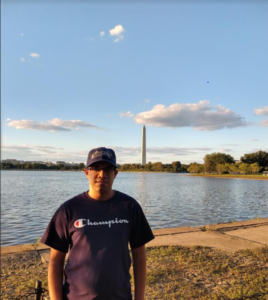What is a Digital Identity?
A digital Identity can be described as a person’s online identity that consists of the person’s attribute and personal information. These set of data helps form an identity that can be shared online with other users. Information such as your favorite hobby, your background, information about your career and even a selfie can be used to create an online identity which leaves track of your data (Jawed). The users can decide the type of digital identity they want to create. For example, the user might choose to create a profile for professional networking such as in LinkedIn or create a profile where they want to connect with their friends and family such as in Facebook. The users can choose how they want to be portrayed online by sharing information that is relevant to the identity they want to create.
How do Personal versus Professional approaches to digital identity affect Social Media Use?
For social media users it is important to distinguish these approaches as misusing them can have consequences. For personal use, it is normal to share images and content that you feel comfortable to share among your friends or with your family. However, some of these information might be inappropriate for professional use and could jeopardize your career. For example, sharing political messages online might cause your boss to be upset or could affect your chances to be hired after an interview. If you are taking a personal approach, you might think more about your personal lifestyle outside your career and what you like to do as your hobby. You might want to share jokes or contents that you or your friends might find funny. For professional approach, you might post content that is only related to your career. Maybe you are a sports journalist and you only post information about professional sports or an immigration attorney who tweets information only about changes in immigration laws.
How do digital identities converge in networked publics?
Converging between different types of digital identities have become more common as social media’s influence and power have grown. Nowadays, it is more difficult to separate your professional identity with your personal identity as you tend to use same platform to connect with their friends and colleagues. This leaves sensitive personal information exposed to people in your professional networks. One of the drawbacks to this is that your digital identity might not be authentic to the people who view your profile (Spracklen). They might perceive you in a wrong manner. Sometimes, if you are lucky this perception can also have a positive impact on your colleagues or your boss. Therefore, it is important to keep track of these two identities.
Can a Digital Wallet provide trust in Networked Publics?
As technology keeps evolving, digital wallet have become a very important medium to do financial transactions, such as transferring money or online shopping. As it is becoming more common to use these tools to make digital transactions, more sensitive information is being utilized online which is at risk of being hacked. Identity theft is a big problem and can become a big issue for digital wallet users. However, if banks and government tries to protect the users, and the users are cautious when using digital wallet, then more trust can be built long term.
References
Jawed, Saira, et al. “Digital Professional Identity: Dear Internet! Who Am I?” Education for Health (Abingdon, England), vol. 32, no. 1, Jan. 2019, pp. 33–35. EBSCOhost, doi:10.4103/efh.EfH_232_17.
Spracklen K. (2015) Identity-Making and Social Media. In: Digital Leisure, the Internet and Popular Culture. Leisure Studies in a Global Era. Palgrave Macmillan, London. https://doi.org/10.1057/9781137405876_6

Recent Comments